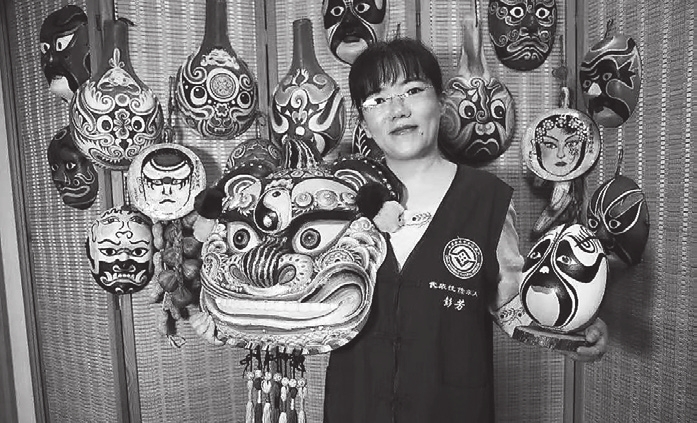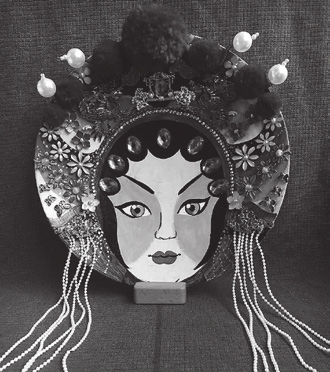


After exhibiting paintings in glass bottles, straw paintings and rubbings, the HQB Museum in Futian District recently opened two new Chinese intangible cultural heritage crafts exhibitions: Chinese knots and Chinese mask paintings. A Chinese knot is woven from a length of cord into a variety of shapes and of varying complexities. Each shape has its own symbolic meaning, and nowadays you can find them as decorations, gifts and accessories. Although knot weavers can use a variety of colors, they usually use red as red signifies good fortune. In Chinese, “knot” means reunion, friendship, marriage, etc. Chinese knots are often used to express good wishes, including connection, prosperity, longevity and love. Some of the earliest Chinese knots can be seen in the patterns inscribed on bronze vessels of the Warring States period (476-221 B.C.). The phenomenon of knot tying continued to steadily evolve over the course of thousands of years with the development of more sophisticated techniques and increasingly intricate woven patterns. During the Qing Dynasty (1644-1911) knotting finally broke from its pure folklore status, becoming an acceptable art form in Chinese society and reached the pinnacle of its success. Chinese masks have a rich history and the earliest ones were made for ritual use. Masks have also been used in wars to intimidate enemies, and in operas, they are used by performers to express personalities of different characters. Various examples of masks in China include Tibetan masks, opera masks and Shaanxi Mashao masks. The exhibitions at the HQB Museum showcase Chinese knots made by Yang Linjuan from Hebei Province and Chinese masks painted by Guangzhou Academy of Fine Arts graduate Peng Fang. Dates: Until Jan. 17, 2022 Hours: 10 a.m.-6 p.m., closed Mondays Booking: WeChat account “HQB_Museum” Venue: HQB Museum, 5/F, Modern Window Commercial Plaza, Futian District (福田区现代之窗商业广场五楼华强北博物馆) Metro: Line 2 or 7 to Huaqiang North Station (华强北站), Exit E2(SD News) | 
